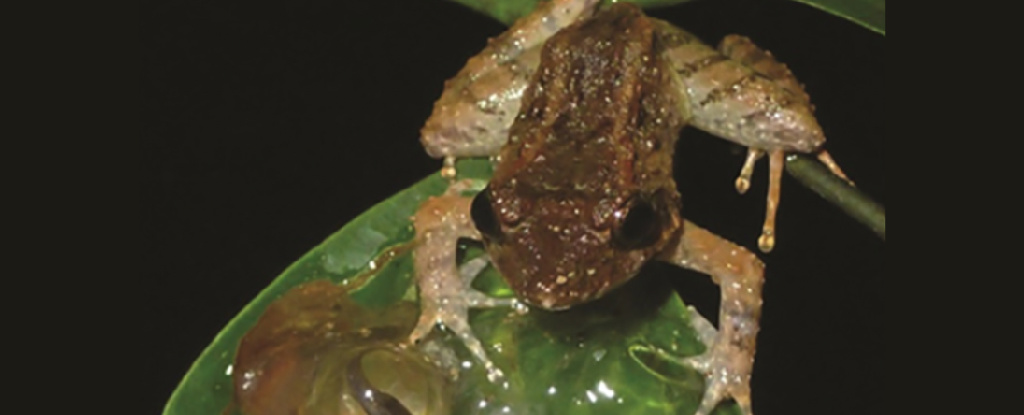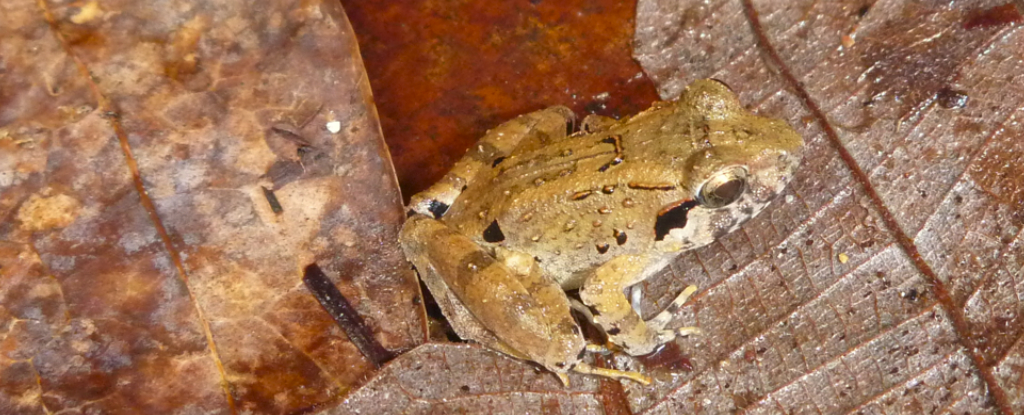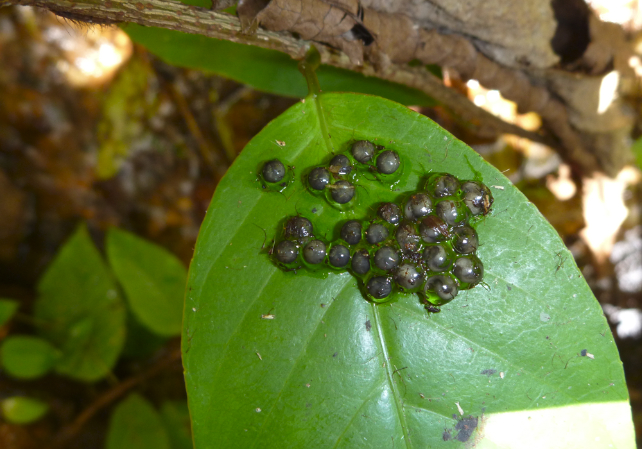
Amidst the verdant, volcanic landscapes of Sulawesi, Indonesia, numerous varieties of fanged frogs exhibit distinctive reproductive behaviors. Among them is Limnonectes larvaepartus, the sole frog species globally recognized for its rare ability to give birth to live tadpoles.
Presenting yet another of its mysteries, this tropical island unveils the tiniest fanged frog in the world.
In connection with its fanged frog relatives, the recently discovered Limnonectes phyllofolia follows the conventional method of laying amphibian eggs.

During a rainforest expedition, a group of herpetologists from the United States and Indonesia discovered glassy, black frog eggs nestled on leaves and moss-covered boulders elevated several feet above the ground.
This quickly grabbed the researchers’ focus, as frog eggs are typically deposited in water to prevent their jelly coating from drying out.
Shortly afterward, the scientists observed coin-sized, mottled-brown frogs guarding their nests.
“Normally when we’re looking for frogs, we’re scanning the margins of stream banks or wading through streams to spot them directly in the water,” says lead author Jeff Frederick, a wildlife ecologist at the Field Museum in Chicago.
“After repeatedly monitoring the nests though, the team started to find attending frogs sitting on leaves hugging their little nests.”
These protective frogs apply compounds to their eggs, ensuring they remain moist and shielded from bacteria and fungi.

Intriguingly, all the frogs tending to the eggs happened to be male. According to Frederick, “Male egg-guarding behavior isn’t entirely unheard of in the frog world, but it’s relatively rare,” as stated.
This previously undiscovered frog species possesses a strip of minuscule teeth on its upper jaw and two small fangs extending from its lower jaw. (Typically, frogs have teeth only on their upper jaw.)
“This new species is tiny compared to other fanged frogs on the island where it was found,” says Frederick.
While other saber-toothed frogs on Sulawesi reach two pounds in weight, this novel species weighs approximately two grams – a size roughly equivalent to a dime, as noted by Frederick.
The newly discovered species was named Limnonectes phyllofolia. (The term ‘Phyllofolia’ translates to ‘leaf-nester.’)
In Southeast Asia, numerous frog species have developed fangs as an evolutionary adaptation to compete for territory, attract mates, and capture crunchy prey like centipedes and crabs.

Leaf-nesting frogs, not relying on waterways for reproduction, don’t need excessively large fangs to vie for prime egg-laying locations in a congested stream.
The researchers suggested that this might elucidate their comparatively smaller fang size in comparison to other frogs on the island.
In earlier studies, scientists discovered that frog fangs have independently evolved at least four times throughout the diverse range of frog species.
Through an examination of the behavior and diet of these species, it became apparent that frog fangs, evolving in response to sexual selection, tend to be relatively larger than those evolving in response to other environmental pressures.
Frogs with fangs have been identified in various regions including Cambodia, Vietnam, west Africa, and South America. Additionally, scientists have uncovered fanged tadpoles of the vampire flying frog (Rhacophorus vampyrus) in the lush evergreen forests of southern Vietnam.
The findings of this research were documented in the journal PLOS ONE.





